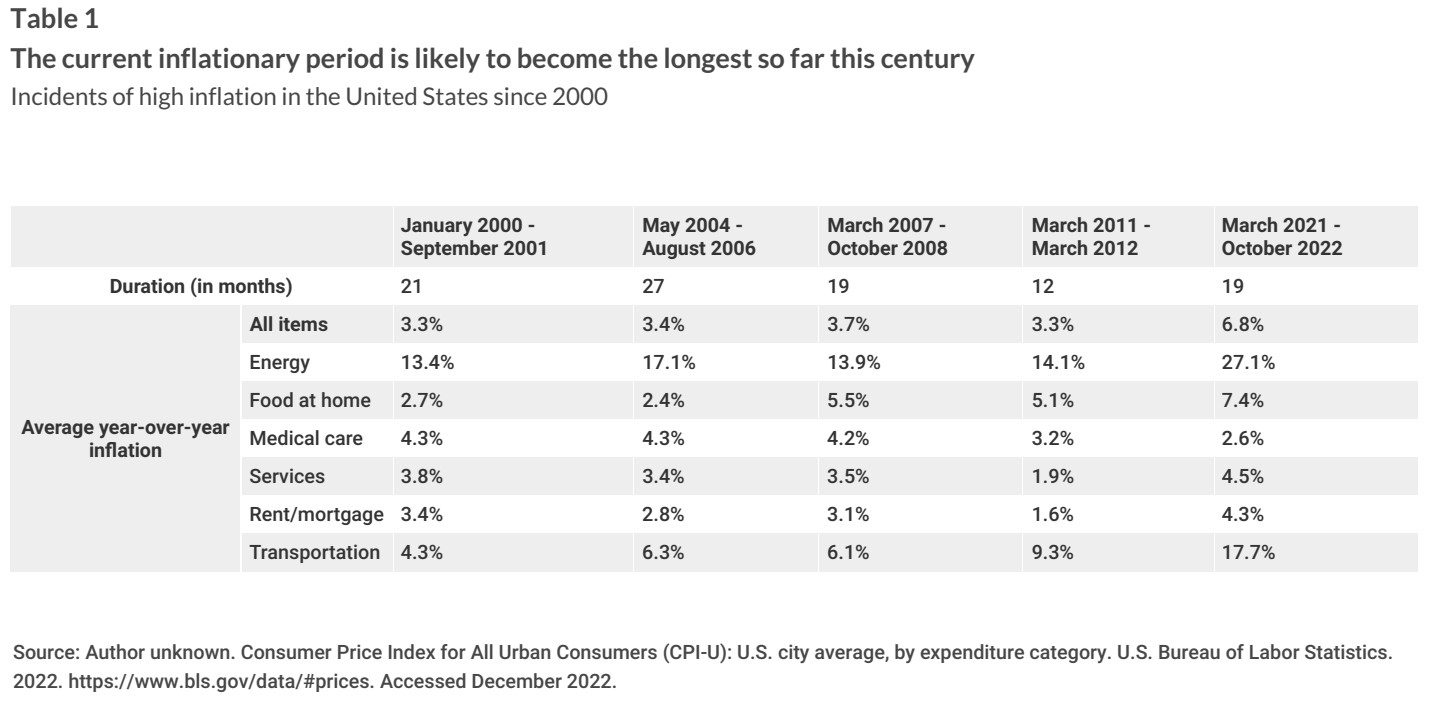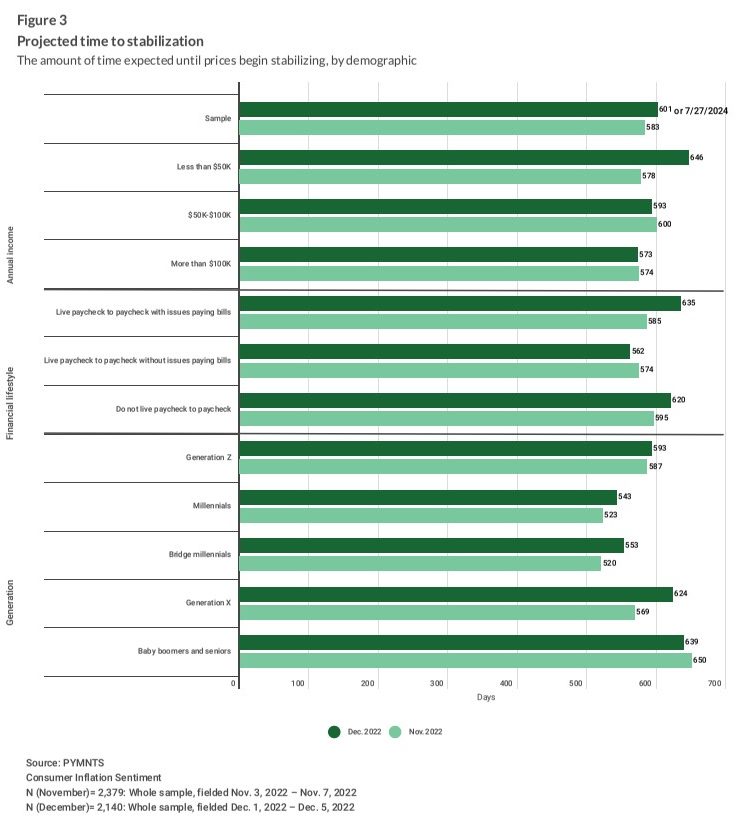New York Fed Report Sees Some Inflation Relief Despite Consumer Fears

Consumers’ inflation perceptions are consistently higher than government figures.
The Federal Reserve Bank of New York’s closely watched Survey of Consumer Expectations for December, released Monday (Jan. 9), found that consumers feel inflation will soften somewhat in early 2023, yet remain escalated on a longer timeline before stability returns.
In a press release, the Federal Reserve Bank of New York’s Center for Microeconomic Data said: “Median one-year-ahead inflation expectations continued to decline in December, falling by 0.2 percentage point to 5.0%, its lowest reading since July 2021. In contrast, three-year-ahead inflation expectations were unchanged in December at 3.0%.”
While the December figures from the Fed reflect the fact that there is some consumer optimism, direct surveys of consumers by PYMNTS found more doubt and uncertainty than government figures generally expressed.
Our December 2022 report, Consumer Inflation Sentiment: In It For The Long Haul, noted that “the majority of consumers agree that we are only halfway through this high inflationary period. Overall, consumers think inflation will return to normal levels by June 2024, or about 20 months from now.”
We found millennials to be the most confident cohort, “believing inflation will normalize by April 2024, four months sooner than baby boomers and seniors on average.”
In its survey, the Fed found that the outlook on year-ahead price changes fell by an 0.7 percentage point for gas (to 4.1%) and food (to 7.6%), also recording a 0.2 percentage point drop for college education (to 9.2%) and rent (to 9.6%).
Contrast that with PYMNTS’ December inflation report, which found consumers reporting gas prices up 43% — “well above the 26% increase recorded by official statistics” — along with perceived inflation rates that are “particularly divergent for dairy products, at 22% versus 15%, and meats, at 23% compared to 8%. A similar gap is perceived in most retail categories, including apparel and electronic appliances. Consumers believe clothing prices, for example, are on average 21% above 2021 levels, while the BLS cites just a 4% increase.”
Per the Fed’s December report, “perceptions of credit access compared to a year ago improved slightly in December, but the share of households reporting it is harder to obtain credit than one year ago remains near its series high. Similarly, expectations for future credit availability improved in December, with the share of respondents expecting it will be harder to obtain credit in the year ahead falling.”
Additionally, the report found average perceptions of the probability of missing a minimum debt payment over the next 90 days dropped by 0.4% to 11.4%.
Our last sounding of U.S. households found that “paycheck erosion and concerns about the future are driving Americans across all economic statuses to cut back their spending significantly,” with 69% of consumers overall and 59% of consumers whose income has increased along with inflation cutting back on nonessential spending.
On Friday (Jan. 13), the U.S. Bureau Of Labor Statistics will release its Consumer Price Index for the month of December, projected to show inflation easing to 6.5% from a peak of 9.1% in June.


